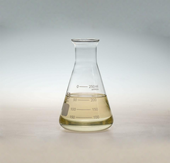E-mail: admin@saifutd.com Tel: 86-13598853789
E-mail: admin@saifutd.com Tel: 86-13598853789
Products

According to the sterilization mechanism, it can be divided into two categories: oxidizing fungicides and non-oxidizing fungicides. Oxidizing fungicides are usually strong oxidants, which achieve the sterilization purpose mainly by oxidizing with metabolic enzymes in bacteria. Commonly used oxidizing fungicides include chlorine, chlorine dioxide, bromine, ozone, hydrogen peroxide, etc. Non-oxidizing fungicides act on the special parts of microorganisms in the form of toxic agents, thereby destroying the cells or life forms of microorganisms to achieve the sterilization effect. Common non-oxidizing fungicides include chlorophenols, isothiazolinones, quaternary ammonium salts, etc.
Water treatment chemicals biocide
According to the sterilization mechanism, it can be divided into two categories: oxidizing biocides and non-oxidizing biocides. Oxidizing biosides are usually strong oxidants, which achieve the sterilization purpose mainly by oxidizing with metabolic enzymes in bacteria. Commonly used oxidizing biosides include chlorine, chlorine dioxide, bromine, ozone, hydrogen peroxide, etc. Non-oxidizing biosides act on the special parts of microorganisms in the form of toxic agents, thereby destroying the cells or life forms of microorganisms to achieve the sterilization effect. Common non-oxidizing biosides include chlorophenols, isothiazolinones, quaternary ammonium salts, etc.
Oxidizing Biocide
Technical indicators
| Project | Indicators |  |
| Appearance | Colorless to light yellow transparent liquid | |
| Density(20℃) g/cm3 | 1.15 | |
| pH | 10.0-11.0 |
Performance and Uses
Oxidizing biocide is a strong oxidizing biocide, which is widely used in circulating cooling water. pH changes have little effect on the sterilization effect, so it is suitable for all kinds of circulating cooling water systems. It can completely replace chlorine and non-oxidizing biocides, which is safe and economical.
Oxidizing biocide has the advantages of high efficiency, broad spectrum, non-toxicity, strong penetration, easy use, wide temperature and pH range of use, etc. It is a new generation of safe and multifunctional oxidizing biocide. It can be widely used in industrial circulating cooling water systems such as steel plants, power plants, chemicals, fertilizers, oil refining, metallurgy, etc. as sterilization and algae removal and slime stripping agents. It can also be used for drinking water, environmental disinfection, food preservation, deodorization, medical equipment disinfection, pulp and fabric bleaching, sugar decolorization, food and processing equipment sterilization and disinfection, etc.
Non-oxidizing Biocide
Technical indicators
| Project | Indicators |  |
| Appearance | Colorless to light yellow transparent liquid | |
| Density(20℃) g/cm3 | ≥1.01 | |
| pH | 2.0-4.0 |
Performance and Uses
Non-oxidizing biocides kill bacteria by breaking the bonds between bacteria and algae proteins. After contacting microorganisms, they can quickly and irreversibly inhibit their growth, leading to the death of microbial cells. Therefore, they have a strong inhibitory and killing effect on common bacteria, fungi, algae, etc. They have high killing efficiency, good degradability, no residue, safe operation, strong stability, and low cost of use. They are miscible with chlorine and most anionic, cationic and non-ionic surfactants. At high doses, they have a significant effect on the stripping of biological slime.
Usage method
Use impact dosing, the dosage is generally 80-100mg/L, which has a thorough killing effect on bacteria and algae. If you want to achieve a faster stripping effect when there are more algae, you can increase the dosage appropriately and remove floating objects in time.
